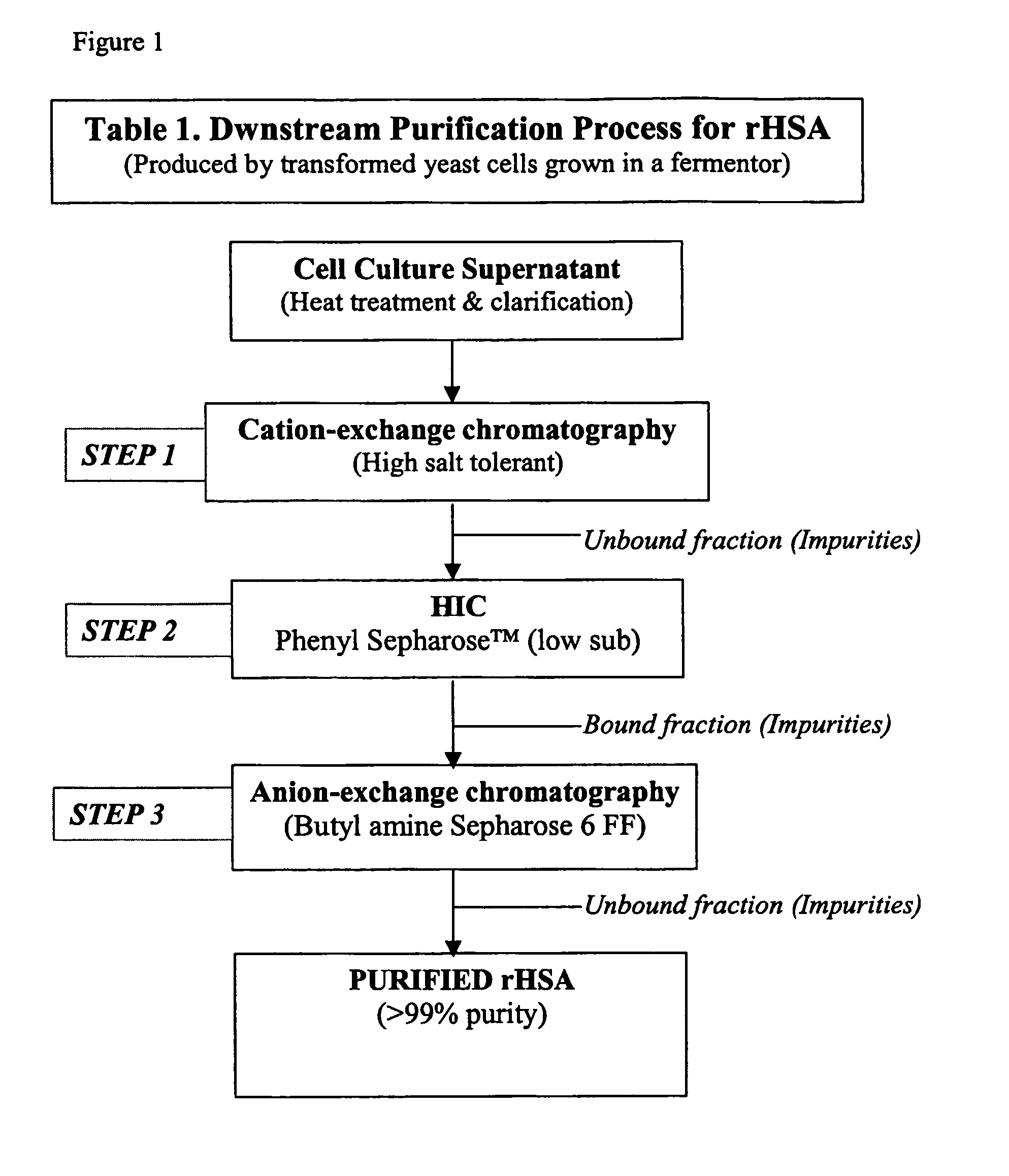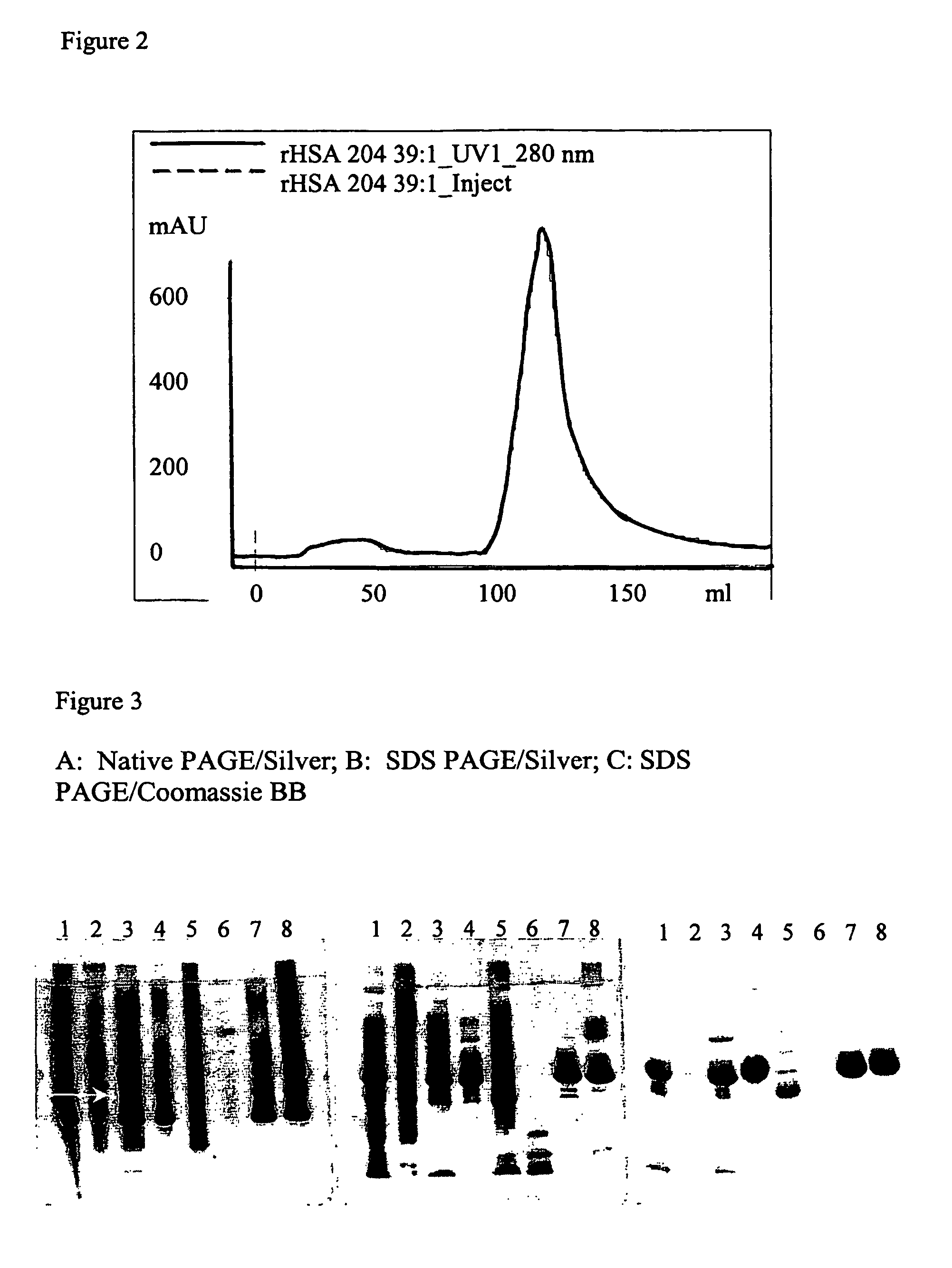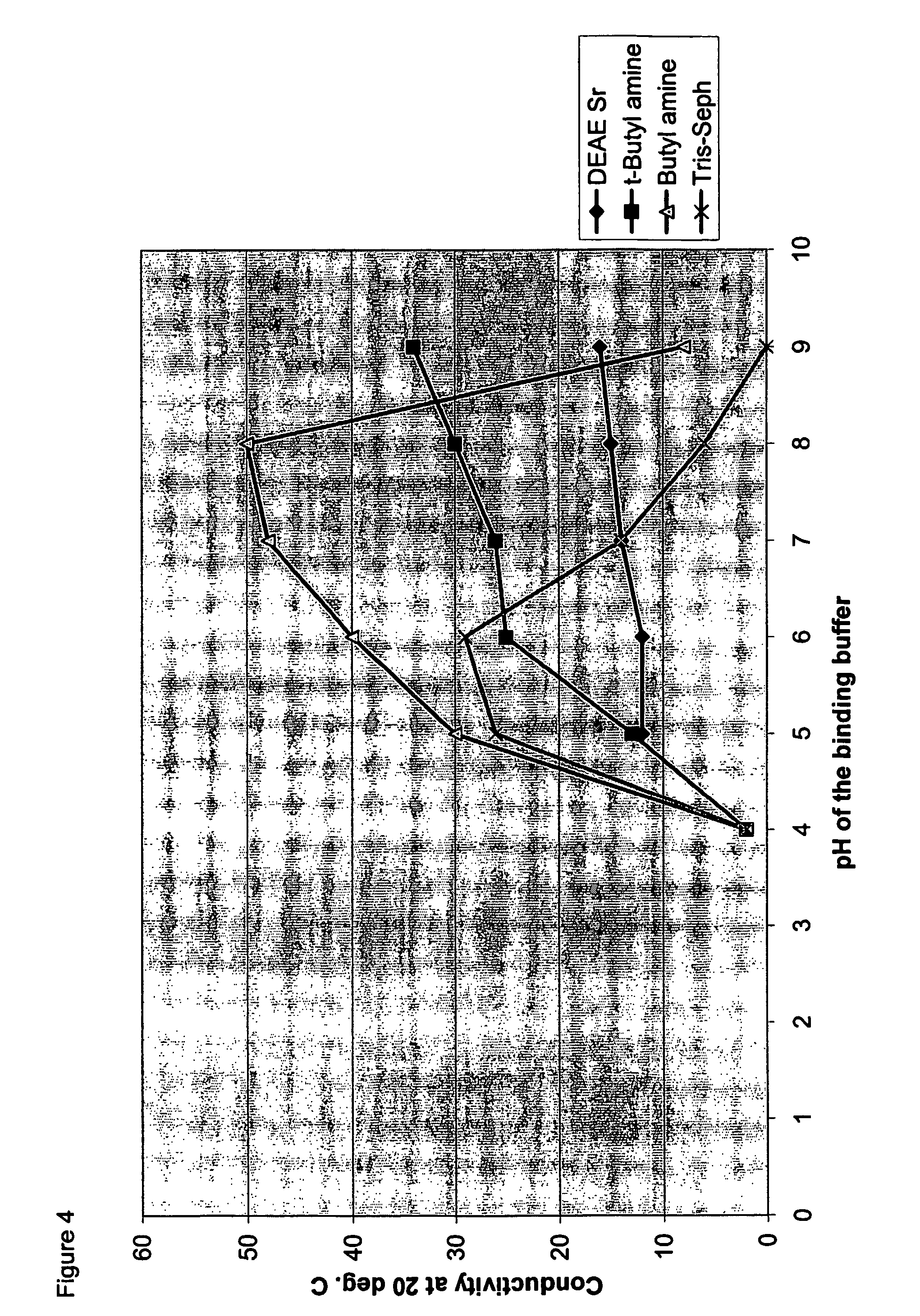Method, use and kit for separating albumin from contaminants in a liquid
a technology of albumin and contaminants, applied in the field of preparation of recombinant human serum albumin, can solve the problems of reducing the yield of products, and achieve the effects of convenient direct use, high repeatability, and relatively high salt concentration
- Summary
- Abstract
- Description
- Claims
- Application Information
AI Technical Summary
Benefits of technology
Problems solved by technology
Method used
Image
Examples
example 1
Preparation of the Weak Anion Exchanger Gel Used Below
1:1. Activation of Sepharose™ 6 FF With Allylglycidyl Ether
[0046]This is performed by reacting allylglycidyl ether with Sepharosem 6 FF under alkaline conditions.
[0047]In a suitable reaction vessel, 100 g of Sepharose™ 6 FF was mixed with 45 mL of 50% (w / w) aqueous solution of NaOH, 0.5 g of NaBH4 and 13 g of Na2SO4 and. The mixture was stirred for 1 hour at 50 C. and 100 mL of allylglycidyl ether was added. The suspension was stirred for an additional 18 h at 50 deg C. The mixture was filtered and the gel washed successively with 500 mL of de-ionised water, 500 mL ethanol, 200 mL de-ionised water, 200 mL 0.2 M acetic acid, and finally with 500 mL of de-ionised water.
[0048]Analysis by titration resulted in a degree of substitution of 0.23 mmol of allyl groups / ml gel. In the following, the allyl-derivatised Sepharosem™ 6 FF will be referred to as Product I.
1:2. Activation of Product I (allylated-Sepharose™ 6 FF)
[0049]In a typical ...
example 2
Purification of rHSA
[0051]The example presented below will disclose a three-step purification process , wherein a cell culture supernatant (CCS), comprising rHSA, is subjected to the following chromatographic steps:[0052](a) cation exchange on a bi-modal, high salt-tolerant separation medium;[0053](b) hydrophobic interaction chromatography (HIC); and[0054](c) anion-exchange chromatography according to the present invention.
It is noted that the disclosures below of steps (a) and (b) are provided as illustrating one possible way of treatment of the sample before the method of the present invention as illustrated in step (c). Thus, the present invention can use as starting material any sample, preferably one that has been subjected to equivalent capture and purification steps.
Materials and Methods
[0055]The cell culture supernatant (CCS) containing rHSA was prepared by fermenting genetically-modified P. pastoris cells for 2 weeks or more, followed by separation of the cells by filtratio...
example 2 (
EXAMPLE 2(c)
Polishing According to the Invention Using a Weak Anion-Exchanger
[0076]The two fractions obtained from the previous HIC step were pooled and 1 mL aliquots from each were saved for analytical determinations (see above). A column (XK26 / 20) was packed with DEAE Sepharose™ Fast Flow, or the weak anion-exchanger of this invention (i.e. highly substituted Butyl Sepharose 6 Fast Flow) to obtain a packed bed volume of 40 mL. Each of the packed media was then washed with 2 CV of de-ionised water and then with about 5 CV of Buffer C to equilibrate them. The unbound fraction obtained from the HIC step was transferred to a 150 mL Superloop and applied to one or the other of the above two columns. The unbound fraction was eluted with 6 CV of Buffer C (from the DEAE Sepharose Fast Flow column) or with 2 CV from the modified Butyl-Sepharose column. The bound fraction was eluted with 2 CV of a 2 M solution of NaC 1 (for the DEAE column) or with 5 CV of Buffer D (for the column packed wi...
PUM
| Property | Measurement | Unit |
|---|---|---|
| molecular weight | aaaaa | aaaaa |
| molecular weights | aaaaa | aaaaa |
| molecular weights | aaaaa | aaaaa |
Abstract
Description
Claims
Application Information
 Login to View More
Login to View More - R&D
- Intellectual Property
- Life Sciences
- Materials
- Tech Scout
- Unparalleled Data Quality
- Higher Quality Content
- 60% Fewer Hallucinations
Browse by: Latest US Patents, China's latest patents, Technical Efficacy Thesaurus, Application Domain, Technology Topic, Popular Technical Reports.
© 2025 PatSnap. All rights reserved.Legal|Privacy policy|Modern Slavery Act Transparency Statement|Sitemap|About US| Contact US: help@patsnap.com



